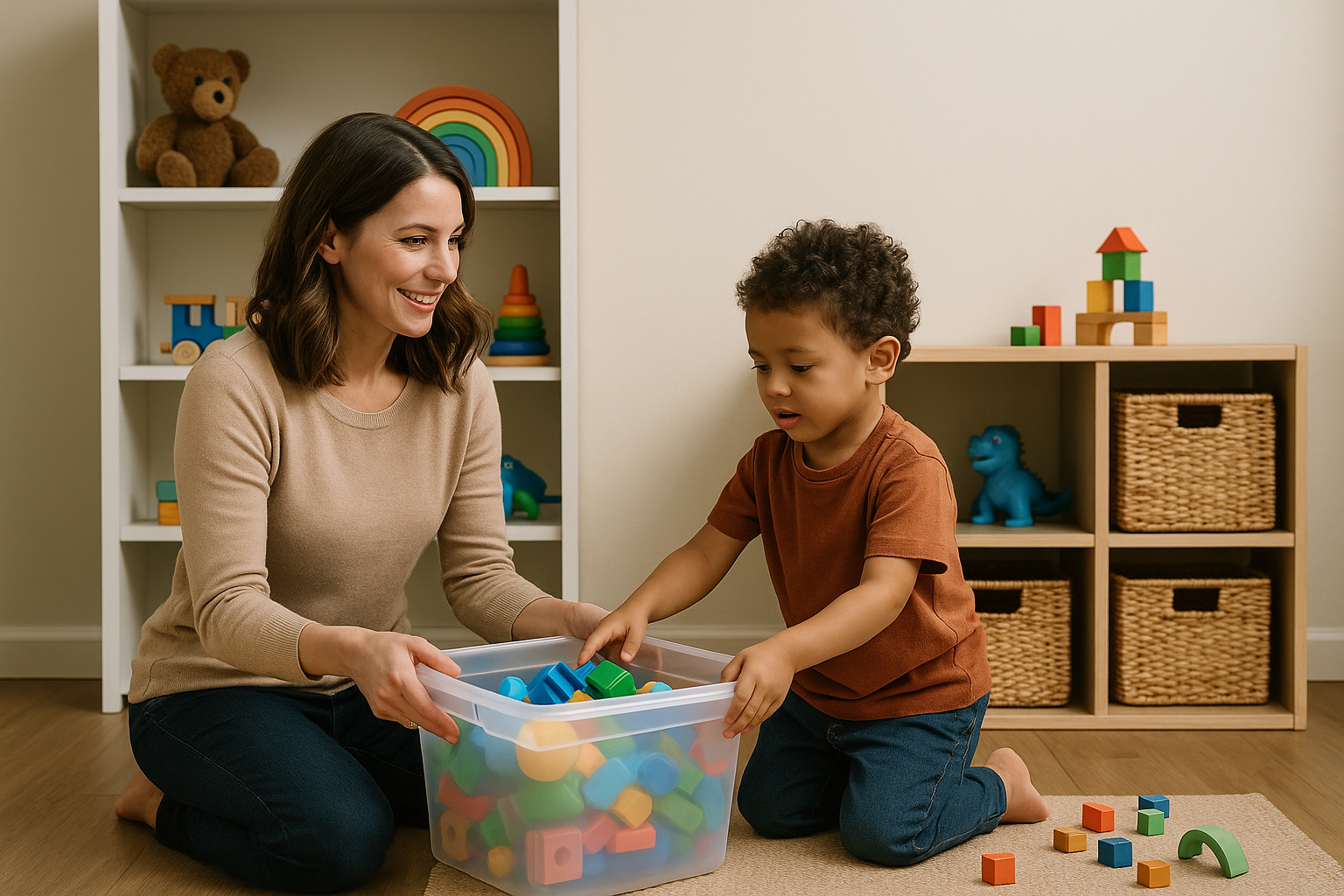A cluttered playroom might look fun at first glance, but having too many toys available at once can actually overwhelm young children. Instead of leading to more fun, it can cause shorter attention spans, frequent boredom, and more mess. That’s where toy rotation comes in—a simple system that encourages deeper play, more creativity, and greater appreciation for the toys your child already has.
In this article, you’ll learn how to implement a toy rotation system at home that supports your child’s development and keeps playtime fresh and exciting.
Why Toy Rotation Works
Rotating toys helps children:
- Stay engaged with fewer distractions
- Play longer and more creatively
- Develop focus and independent play skills
- Learn to care for and appreciate their toys
- Reduce overstimulation and clutter
Fewer toys = more meaningful play.
1. Start by Decluttering
Before you start rotating toys, take the time to assess what you already have.
Steps to take:
- Remove broken or incomplete toys
- Set aside items your child has outgrown
- Donate duplicates or unused toys
- Keep sentimental or seasonal toys in a separate box
Involving your child in this process can also teach responsibility and mindfulness.
2. Sort Toys by Category
Organizing toys by type will make rotation easier and more balanced.
Common categories:
- Building toys: blocks, magnetic tiles, LEGO®
- Creative toys: playdough, crayons, art supplies
- Pretend play: dolls, dress-up clothes, kitchen sets
- Educational toys: puzzles, matching games
- Books: picture books, interactive books
- Movement toys: balls, musical instruments
Store each category in bins, baskets, or labeled boxes.
3. Choose a Rotation Schedule
There’s no strict rule for how often you should rotate. Pick a rhythm that works for your home.
Popular options:
- Weekly: Change toys every 7 days
- Biweekly: Every two weeks
- Monthly: Once a month rotation
You can also rotate toys whenever your child seems bored or overwhelmed.
4. Limit the Number of Toys Out
The goal is to keep it simple and engaging. Less is more.
A suggested set for preschoolers:
- 1 building toy
- 1 puzzle or game
- 1 pretend play item
- 1 creative toy
- 3–5 books
- 1 movement or music toy
Adjust based on your child’s preferences and available space.
5. Store Unused Toys Out of Sight
To keep the magic of rotation alive, place the unused toys where your child can’t see them.
Tips for storing:
- Use clear bins with labels for easy access
- Sort by category or age group
- Store on high shelves, in closets, or under the bed
- Keep “special” toys or seasonal sets in separate boxes
6. Observe and Adjust
Watch your child during playtime with the selected toys. Ask yourself:
- Which toys keep their attention the longest?
- Are any toys being ignored?
- Are they using the toys in creative, new ways?
These observations help you fine-tune future rotations.
7. Involve Your Child in the Rotation
Make switching toys an exciting and collaborative moment.
You can say:
- “It’s toy rotation day! Want to help pick new toys?”
- “Let’s put these away and choose something different!”
- “Which toy do you think should come back this week?”
This builds decision-making skills and gives them a sense of control.
8. Display Toys Neatly and Accessibly
Set up a low shelf or open storage where each toy is visible and easy to reach.
Benefits of open display:
- Encourages independence
- Reduces overwhelm
- Makes cleanup easier
- Promotes pride in their space
Avoid stuffing toys in bins or having too many options out at once.
9. Reintroduce Old Toys with Excitement
When toys come back into rotation, they feel fresh and exciting again. This helps:
- Reduce constant requests for new toys
- Encourage new types of play with familiar items
- Foster gratitude and imagination
Remind your child: “Look! Your dinosaur set is back—what should we build today?”
10. Keep It Flexible
You don’t need to follow a strict system. Adapt based on your space, time, and child’s interests.
Examples:
- Do mini-rotations with only books or puzzles
- Create themed weeks (animals, colors, transportation)
- Rotate toys during holidays or school breaks
The goal is a calm, engaging environment that supports your child’s natural curiosity.
Final Thoughts: Less Clutter, More Connection
Toy rotation isn’t about having fewer toys—it’s about making more out of the toys you already have. By offering fewer, well-chosen toys at a time, you give your child space to explore, focus, and play with intention.
And as you rotate, you’re not just tidying up—you’re teaching your child to value simplicity, creativity, and mindful play.
